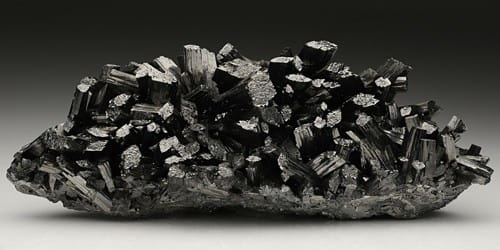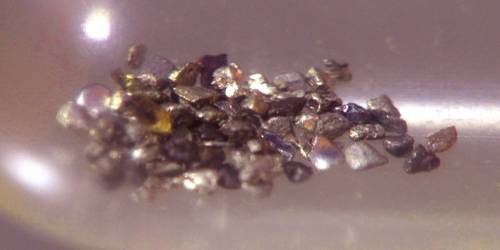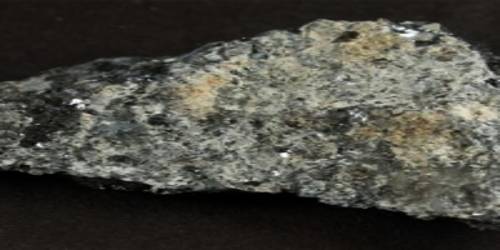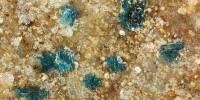Manganite is a mineral composed of manganese oxide-hydroxide, MnO(OH), crystallizing in the monoclinic system. It is a mineral named for its dominating manganese content. It is a black mineral consisting of basic manganese oxide; a source of manganese. It forms in low temperature hydrothermal or hot spring deposits and is found associated with other manganese oxides.
The mineral contains 89.7% manganese sesquioxide; it dissolves in hydrochloric acid with the evolution of chlorine. Although described with various other names as early as 1772, the name manganite was first applied in a publication by W. Haidinger in 1827.
General Information
- Category: Oxide mineral
- Formula: MnO(OH)
- Crystal system: Monoclinic
- Crystal class: Prismatic (2/m) (same H-M symbol)
- Color: Dark steel-gray to black, reddish-brown in transmitted light, gray-white with a brownish tint, with blood-red internal reflections in reflected light.
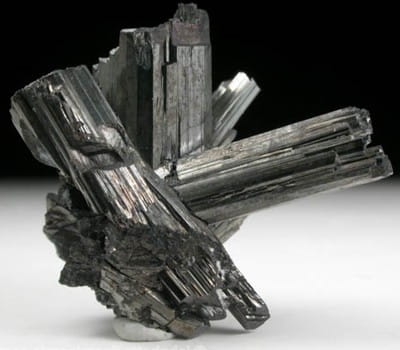
Properties
Crystals of manganite are prismatic and deeply striated parallel to their length; they are often grouped together in bundles. The color is dark steel-grey to iron-black, and the luster brilliant and submetallic. The streak is dark reddish-brown. The hardness is 4, and the specific gravity is 4.3. There is a perfect cleavage parallel to the brachypinacoid, and less-perfect cleavage parallel to the prism faces.
- Crystal habit: Slender prismatic crystals, massive to fibrous, pseudo-orthorhombic
- Twinning: {011}
- Cleavage: {010} perfect, {110} and {001} good
- Fracture: Uneven
- Tenacity: Brittle
- Mohs scale hardness: 4
- Luster: Sub-metallic
- Streak: Reddish-brown to nearly black
- Diaphaneity: Opaque, transparent on thin edges
- Specific gravity: 4.29–4.34
- Optical properties: Biaxial (+)
Occurrences
Manganite occurs with other manganese oxides in deposits formed by circulating meteoric water in the weathering environment in clay deposits and laterites. It forms by low-temperature hydrothermal action in veins in association with calcite, barite, and siderite. Often associated with pyrolusite, braunite, hausmannite, and goethite.
Manganite occurs in specimens exhibiting good crystal form at Ilfeld in the Harz Mountains of Germany, where the mineral occurs with calcite and barite in veins traversing porphyry. Crystals have also been found at Ilmenau in Thuringia, Neukirch near Sélestat in Alsace, Granam near Towie in Aberdeenshire, and in Upton Pyne near Exeter, UK and Negaunee, Michigan, United States, and in the Pilbara of Western Australia.
Association: Pyrolusite, braunite, hausmannite, barite, calcite, siderite, goethite.
Information source:
